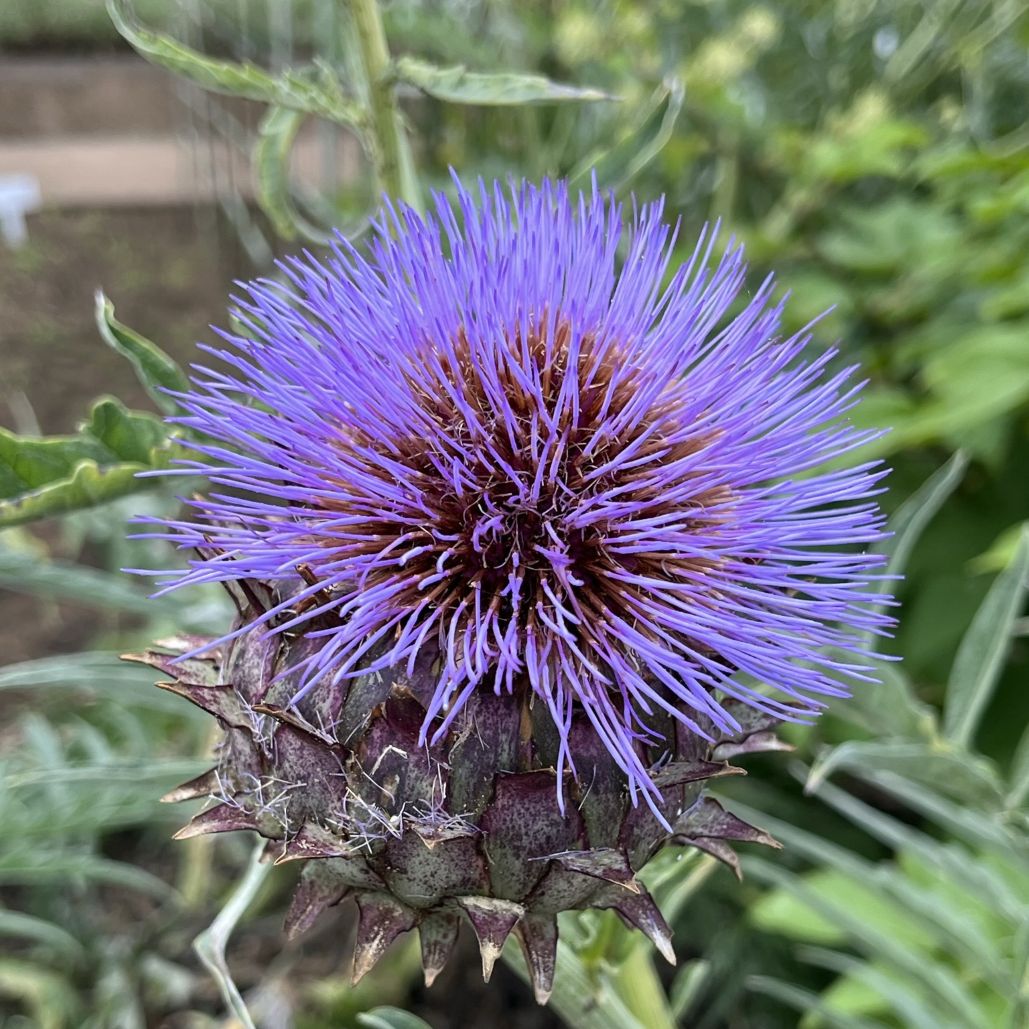カルドンの種小名カルドンクルスは「小さな薊」という意味です。花は筒状花が密集した頭状花序。花後の痩果は冠毛により風で運ばれます。
The specific name of Cardoon, cardunculus, means “little thistle.” Its flowers are clustered in a head of densely packed tubular flowers. The achenes that emerge after flowering are carried by the wind on the pappus.
【仮名】カルドン, チョウセンアザミ
【和名】朝鮮薊
【英名】Cardoon, Artichoke Thistle
【学名】Cynara cardunculus
【誕生】06/ 04, 08/ 20, 09/ 28
【開花】06, 07, 08, 09月
【花色】Purple, Violet
カルドン
カルドンの概要
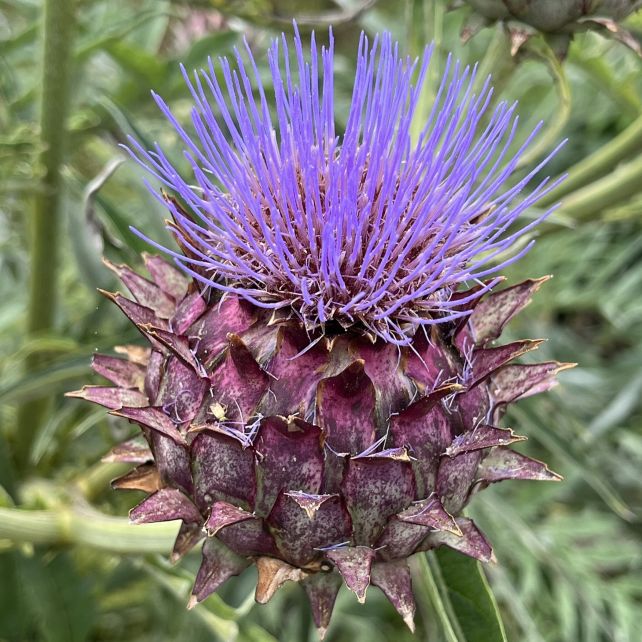
カルドンはキク科チョウセンアザミ属の多年草。原産地の地中海沿岸から食用として世界各地に広がって雑草化しました。南米のパンパ、北米の西海岸、豪州の南部では侵略的外来植物。姿形が似ている近縁種アーティチョークは蕾が食べられる一方、カルドンは葉柄が食べられます。
カルドンの名前
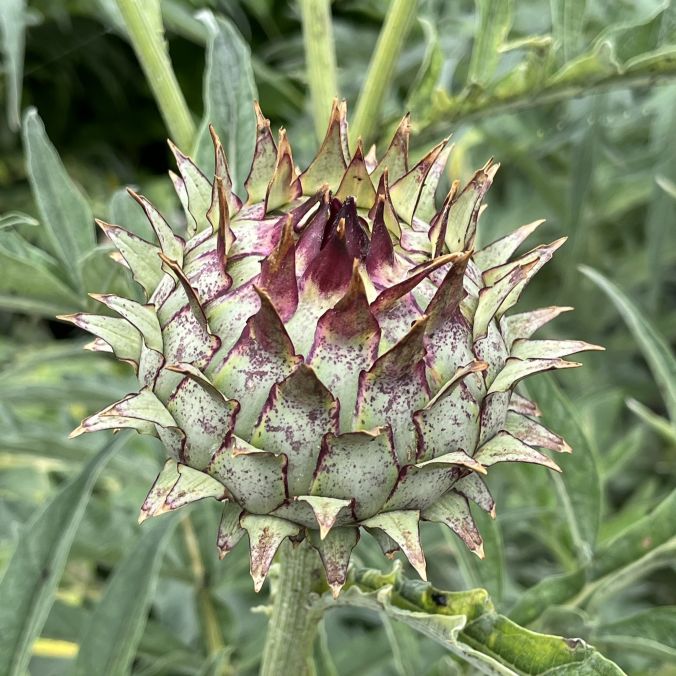
カルドンの名前は学名の種小名カルドンクルスに由来。ラテン語で「小さな薊」という意味です。属名キナラは「犬」という意味。総苞片の刺が犬の歯に似ているからです。和名は近縁種アーティチョークと同じ「朝鮮薊」ですが、朝鮮半島と無関係。「異国の薊」といった意味です。
カルドンの姿形
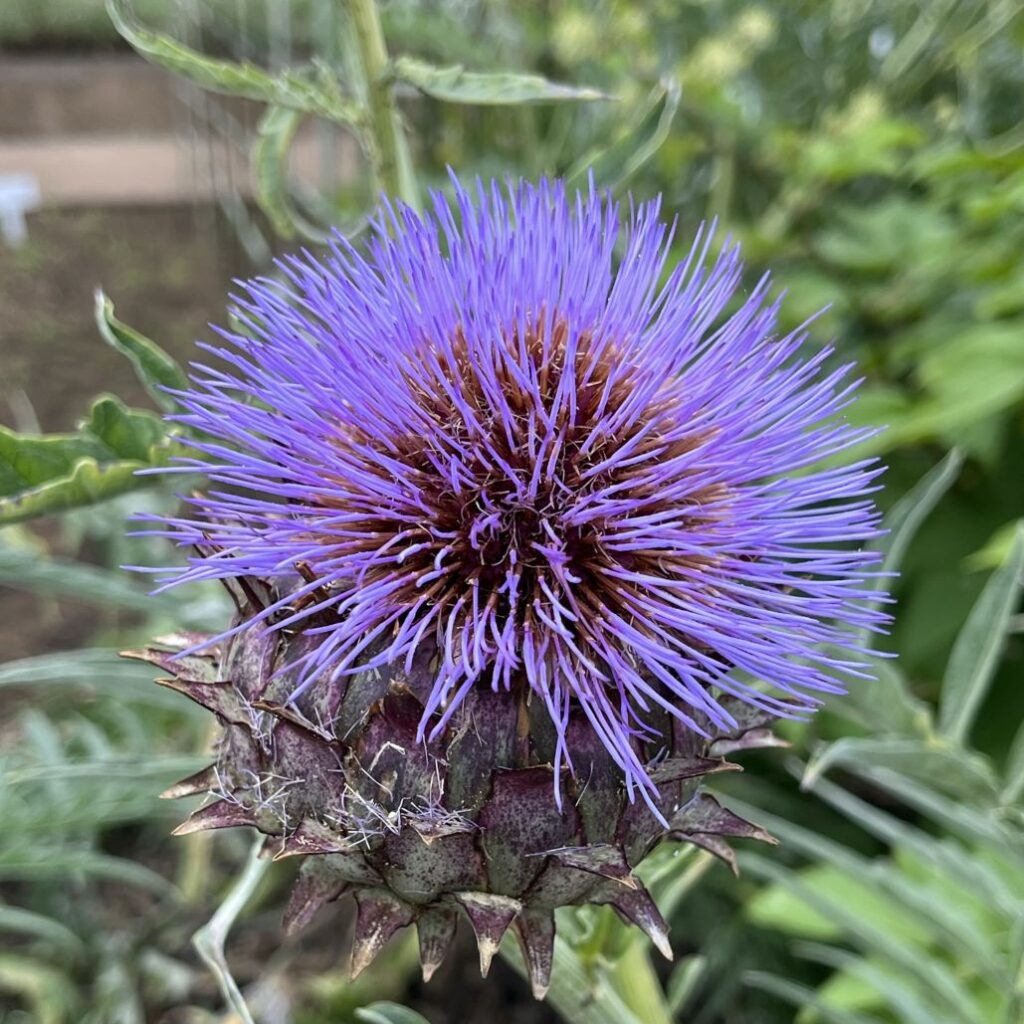
カルドンは太い肉質の直根が伸び、鋭い棘のある茎が立ち上がります。葉は羽状に深く裂け、根生および互⽣。縁に鋭い棘が生え、裏に白色の毛が密生します。花は筒状花が密集した頭状花序。雄性先熟で、蜜蜂が送受粉を担います。花後は痩果を形成。冠毛によって風で運ばれます。
カルドンの利用
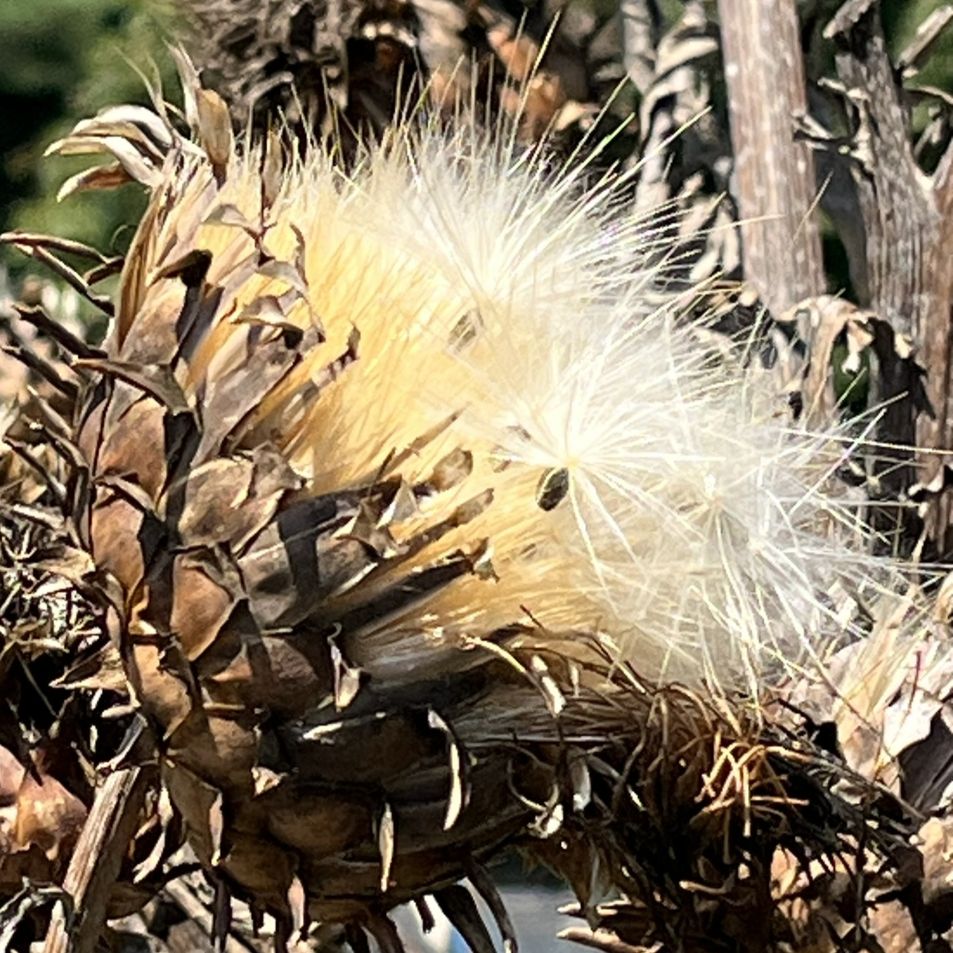
カルドンは葉柄がスペインの煮込み料理「コシード・マドリレーニョ」、イタリアのディップ料理「バーニャ・カウダ」など、欧州の伝統料理に用いられます。花は伝統的なチーズ製造で用いられるレンネットに。蕾は古代ギリシャ・ローマ時代から薬として食欲増進に用いられます。
Cardoon
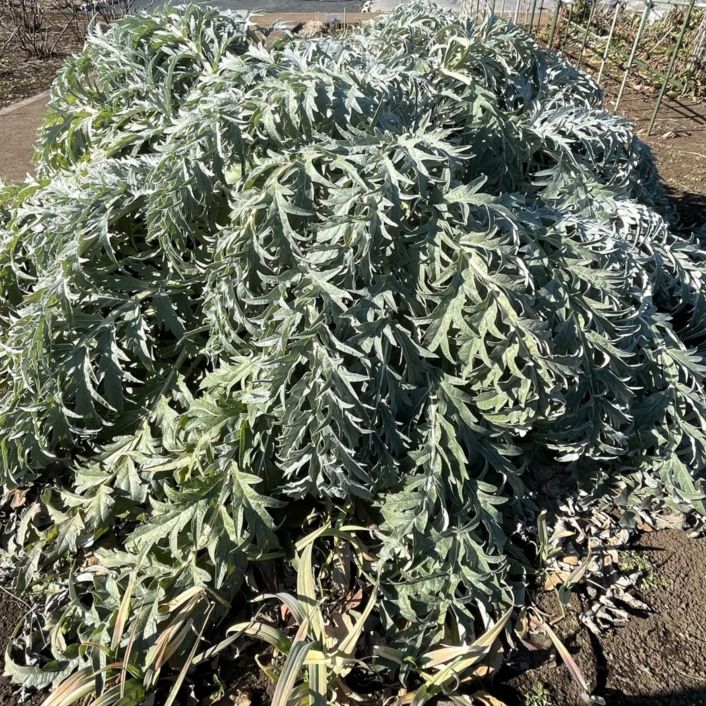
Cardoon is a perennial herb in the Asteraceae family. Its native Mediterranean origin has spread worldwide as an edible plant, becoming a weed. It is an invasive alien plant in the South American Pampas, the west coast of North America, and southern Australia. While its closely related relative, Artichoke, has edible flower buds, Cardoon’s petioles are edible.
The name Cardoon comes from the specific name cardunculus, which means “little thistle” in Latin. The genus name Cynara means “dog,” because the spines on the involucre resemble dog teeth. While its Japanese name means “Korean thistle,” it has no connection to the Korean Peninsula. It actually means “foreign thistle.”
Cardoon has a thick, fleshy taproot and upright stems with sharp spines. The leaves are deeply pinnately lobed, basal, and alternate. The leaves have sharp spines on the edges and dense white hairs on the undersides. The flowers are arranged in a densely packed head of tubular flowers. The plant is protoandrogenous and is pollinated by honeybees. After flowering, achenes form, which are carried by the wind via the pappus.
The cardoon’s leaf stalks are used in traditional European cuisine, such as the Spanish stew “Cocido Madrileño” and the Italian dip “Bagna Càuda.” The flowers are used to make rennet, a traditional cheese-making ingredient. The flower buds have been used as a medicine to stimulate appetite since ancient Greek and Roman times.

